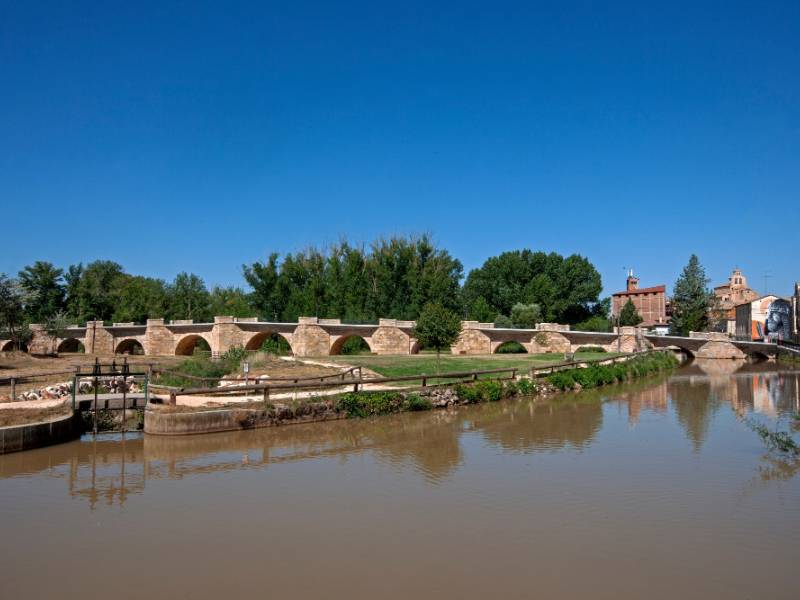Route of the Cid - Burgos
- Route Data
- Ascent slope
- 859 m.
- Previous
- Following
The city of Burgos is one of the main backgrounds where the legend of el Cid took place and the route that relives the exile of the Campeador. Burgos was the town where the exile of Don Rodrigo Díaz de Vivar arose, due to the oath of Santa Gadea. This fact, whereby el Cid made King Alfonso VI swear that he had not taken part in the death of his brother Sancho, led to his exile. This is commemorated by a plaque on the facade of the church of Santa Águeda.
By passing through the doorway of Santa María, Don Rodrigo reached Burgos the same day as he was informed of the news of his exile. On their tour around Burgos, tourists can find other landmarks to commemorate el Cid. The most beautiful, due to its monumental appearance, is the Vía Cidana. A complex that is made up of eight sculptures over the bridge, Puente de San Pablo, all of them related to characters closely linked to the knight.
Reference to content
What to see?
 Castle of AlbillosMore information
Castle of AlbillosMore information14th-century castle, privately owned, turned into a five-star hotel.The tower consists of heavy block ashlar on which abundant spans open, being a small part of the original building. It highlights some...
 Burgos CathedralMore information
Burgos CathedralMore informationGet to know one of the masterpieces of Gothic architecture and the most emblematic monument of the city of Burgos. The slender Cathedral of Santa María in the Castilian city has been astonishing residents,...
 Church of the MercedMore information
Church of the MercedMore informationBuilt in the 15th and 16th centuries by Juan de Colonia.
 Church of Nuestra Señora la Real y Antigua de GamonalMore information
Church of Nuestra Señora la Real y Antigua de GamonalMore information14th-century structure with a tower above the facade. It has a single nave and a square apse. The portico contains a Gothic Calvary and a Mudejar door. In 1704 Alfonso VI moved the bishopric from Oca.
 Church of San Cosme and San DamianMore information
Church of San Cosme and San DamianMore informationRebuilt between the 15th and 16th centuries. It has a Renaissance façade by Juan de Vallejo, and a round arch of triumph with medallions of Saint John the Baptist and Saint John the Evangelist.On the facade,...
 Church of San EstebanMore information
Church of San EstebanMore informationThis Gothic structure was badly damaged by an explosion that destroyed the military fortress that stood on the hillock. It was built between the 13th and 14th centuries. The façade contains an artistic...
 Church of San Gil AbadMore information
Church of San Gil AbadMore informationThis large church was built in the late 13th and early 14th centuries.It has three naves with a transept and lateral chapels. Of particular interest are the Capilla de la Natividad, with its Renaissance...
 Church of San LesmesMore information
Church of San LesmesMore informationDating from the 14th and 15th centuries. It has a pointed arch and three Gothic-Renaissance naves. The church was built on a previous structure by the same name that was destroyed during medieval war confrontations...
 Church of San Nicolas de BariMore information
Church of San Nicolas de BariMore informationConstruction started in the 15th century. The simplicity of its faced is in contrast with the richness of its interior. Particularly noteworthy are the stone altarpiece by Simón de Colonia, gothic sepulchres...


